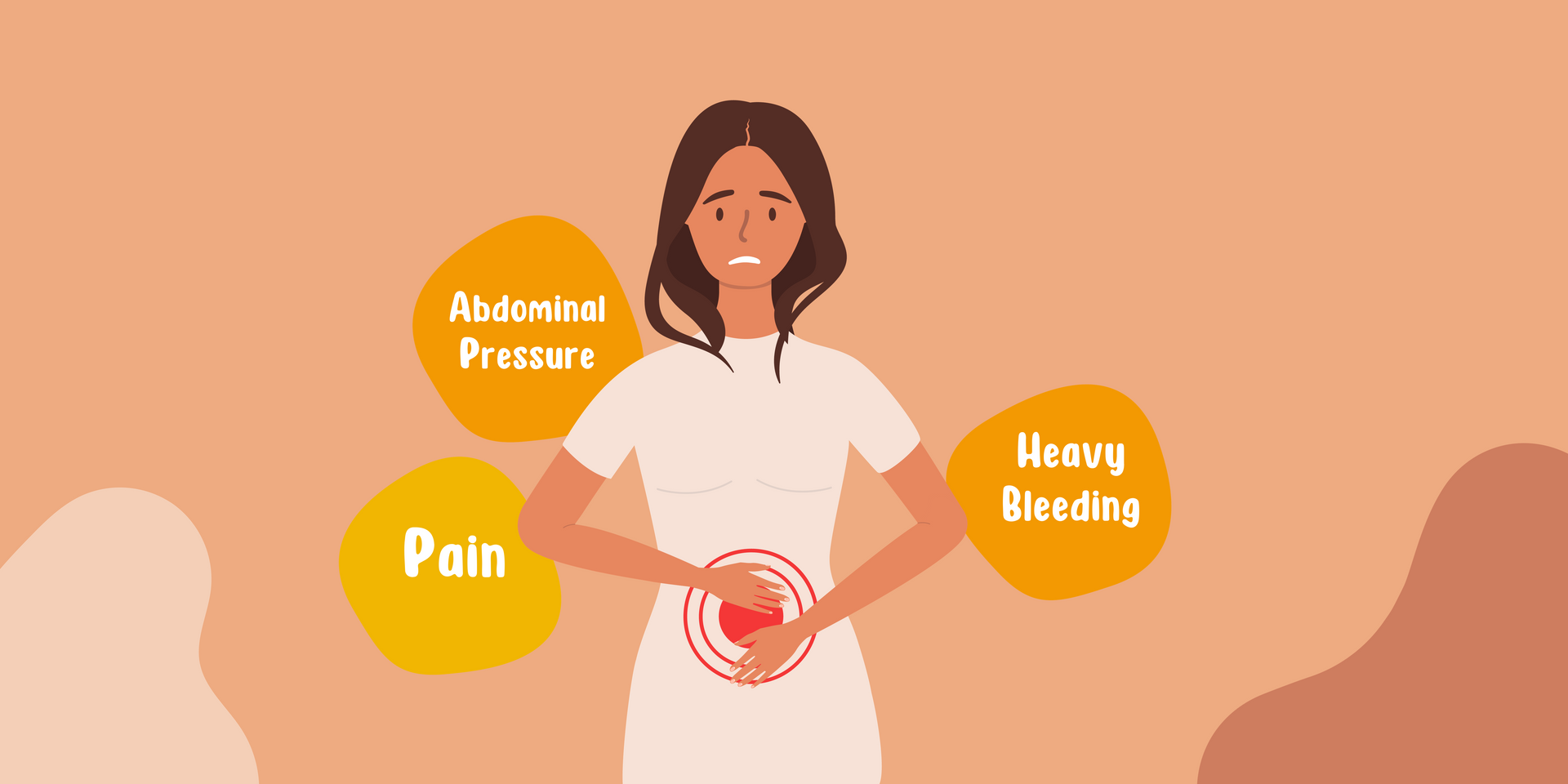An Introduction to Endometriosis
March is endometriosis awareness month. During this time, organizations and individuals worldwide work to educate the public about endometriosis, promote research into the causes and treatments of the condition, and organize fundraisers to increase awareness.
Above all, this month is about empowering women suffering from endometriosis.
What is endometriosis? Endometriosis is a common and often painful disorder in which tissue similar to the lining of the uterus or womb grows outside the uterus, causing inflammation, pain, scarring, potential infertility, and other health issues. It affects an estimated 10% (190 million) of reproductive-age women worldwide; however, it often goes undiagnosed or misdiagnosed for many years.
Do you suffer from painful periods, pain with intercourse, or pelvic pain? If so, you may be suffering from endometriosis. The symptoms can vary significantly from person to person. They may include painful periods, heavy bleeding, chronic pain in the lower back and pelvis, painful bowel movements or urination, and infertility. Surprisingly, some women have no symptoms at all. Endometriosis has been found to occur in as many as 71–87% of women with chronic pelvic pain and in 45% of adolescent females with chronic pelvic pain. If you add on infertility, the likelihood increases to 90%. Unfortunately, because these symptoms can be vague and easily confused with other conditions, it often takes years for someone with endometriosis to receive a proper diagnosis. In fact, on average, it can take seven years to be diagnosed with endometriosis.
Ever wondered how women develop endometriosis? Beyond the view that endometriosis simply develops in the pelvis on its own, there are various other theories available. One of them is called retrograde menstruation, during which the blood flows backward out of the fallopian tubes and settles behind the uterus instead of the normal flow of blood traveling out of the body. The tissue from the lining then embeds itself into the pelvis, leading to inflammation, scarring, and pain. Another theory explains how the endometriosis tissue forms in the bone marrow and moves to different sites in the body through the blood vessels and lymphatic channels. This could explain how endometriosis is found in the lung. Other important factors include genetic and immune dysfunction, environmental exposure, and inflammation.
Let’s talk about pain. As previously stated, endometriosis leads to long-term, often debilitating pain. Unfortunately, women suffering from chronic endometriosis-related pain develop heightened pain perception. Mood disorders are commonly found in women with endometriosis, and a lack of sleep further contributes to increased pain perception. Another contributor to pain with endometriosis is muscle involvement in the pelvis. Working with a pelvic physical therapist and doing pelvic floor yoga can be an excellent adjunct to treatment protocols.
If you think you have endometriosis, what should you do about it? First, seek a medical professional to hear your story and help you toward healing.
I have found that to help women heal from endometriosis and pelvic pain, they must first be given time to be heard. Not all pelvic pain or pain with periods is endometriosis, but there are many cases where it can be.
A 2021 national survey by the Alliance of Endometriosis found that many women with endometriosis do not feel heard or seen. The survey showed that 62% of women with endometriosis were informed that their symptoms were "a normal part of being a woman" by family, friends, employers, and healthcare professionals (42%). Four out of ten respondents felt that discussions were not open or productive. Based on these results, the Alliance set the goal of reducing the stigma associated with endometriosis, encouraging more productive conversations, faster diagnoses, and improved treatment options and quality of life.
If you have endometriosis, what are your treatment options? The conventional treatment for endometriosis includes hormonal medications, non-steroidal anti-inflammatory drugs such as ibuprofen, and surgery. Hormonal therapies include birth control pills or Lupron, commonly called "the menopause shot," as it shuts down your hormones, and women often have symptoms similar to those with menopause, including hot flashes or night sweats. Surgery, usually in the form of laparoscopy, helps confirm the diagnosis and allows for the removal of lesions. However, even with surgical removal, continued management of this chronic (long-term) condition is often necessary.
Integrative medicine is a great addition to conventional medicine for treating endometriosis. An integrative approach would include focusing on the whole person and utilizing the five pillars of health. These five pillars include a healthy plant-forward diet with whole nutrient-rich foods, regular exercise, mind-body practices, restorative sleep, and connection to community and purpose. Pelvic floor physical therapy and acupuncture have also been found to be helpful.
Let’s talk about diet for a moment. Now, there is more discussion about using food as medicine, and for good reason. Food is our medicine. It is the first step toward healing for any medical condition. Endometriosis is no different. If we feed our bodies inflammatory, toxic foods, the inflammation in our bodies will rise. As mentioned previously, endometriosis is a highly inflammatory condition, and we should not increase that inflammation by consuming unhealthy foods. Changing our diet is not easy, and we must be patient with ourselves as we transition to a healthy lifestyle. Seeking help from a nutritionist can be helpful. Unfortunately, not all foods available in the grocery store should be consumed. Try to shop on the perimeter of the grocery stores and limit your intake of processed foods. Eat whole foods as much as possible. Our body is our temple, and we should treat it as such. Only the healthiest foods will do!
Being Empowered. You may feel a lack of control over the constant or cyclic pain. Using an integrative approach allows women with endometriosis to be empowered. Many patients who focus on the pillars of health, as mentioned, in addition to conventional treatment options, begin to recognize a positive change in their bodies. This is empowering. Living a clean lifestyle and eliminating toxins can make a huge difference. Toxins include processed foods, life stressors, toxic relationships, and prolonged unhealthy environmental exposure. Women with endometriosis have a deeper sense of connection with their bodies. Although this, unfortunately, occurs due to long-term pain, it helps you know when the veil of pain begins to lift from living a more holistic lifestyle. While you grow in your health journey and as the pain begins to subside, you see your overall health improve (e.g., maintaining a healthy weight, improving your metabolism, lowering your risk of cardiovascular disease, etc). This is empowering as it shows that you are ultimately in control of your health.
With March being the start of spring, a time of renewal and growth, let's support those affected by the condition by continuing to raise awareness, reducing the stigma, and advocating for better research and education throughout the year.
The information in this article, which includes text, graphics, images, and other things, is only for educational purposes. The information in this article is not intended to be a substitute for professional medical advice, diagnosis, or treatment. Always seek the advice of a physician or other qualified healthcare providers with any questions regarding a medical condition or treatment before undertaking a new health care regimen. Never disregard professional medical advice or delay seeking it because of something you have read in this article.
[1] Practice Bulletin no.114: management of endometriosis. Obstet Gynecol. 2010 Jul. 116 (1):223-36
[2] Kontoravdis A, Hassan E, Hassiakos D, Botsis D, Kontoravdis N, Creatsas G. Laparoscopic evaluation and management of chronic pelvic pain during adolescence. Clin Exp Obstet Gynecol. 1999. 26 (2): 76-7




Contact Us
Thank you for joining my email list.
Oops, there was an error. Please try again later.
Copyright 2023 Dr. Shanee' Porter

